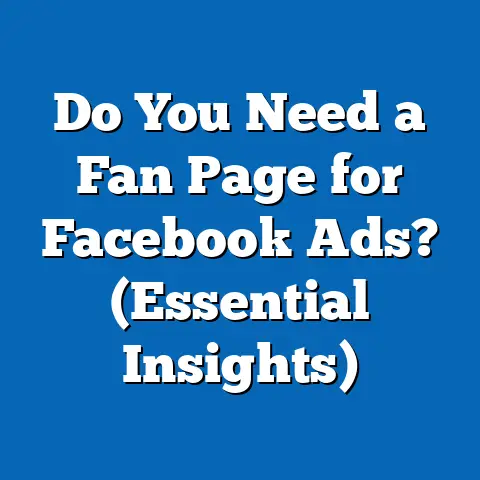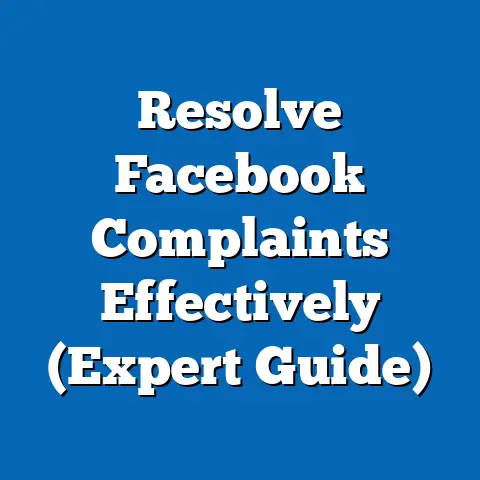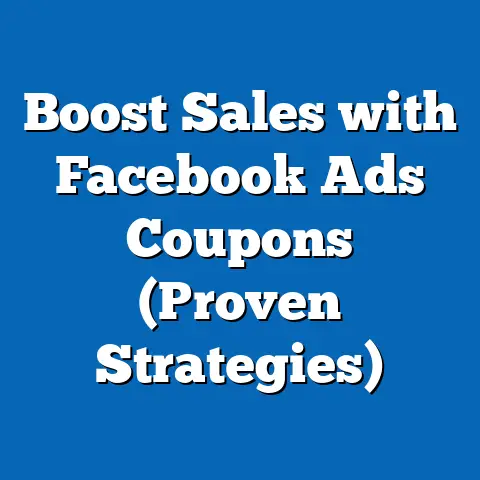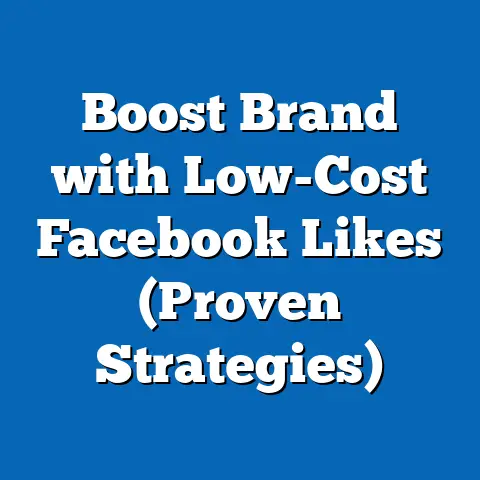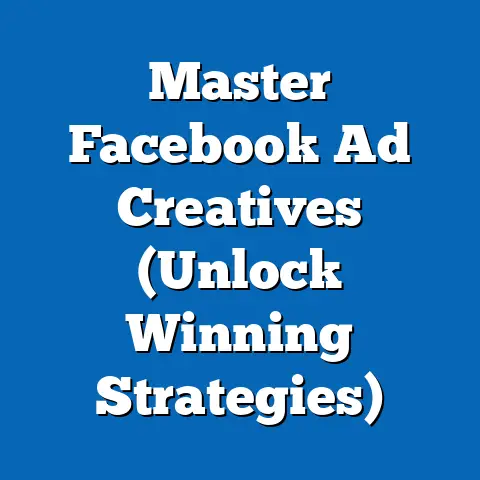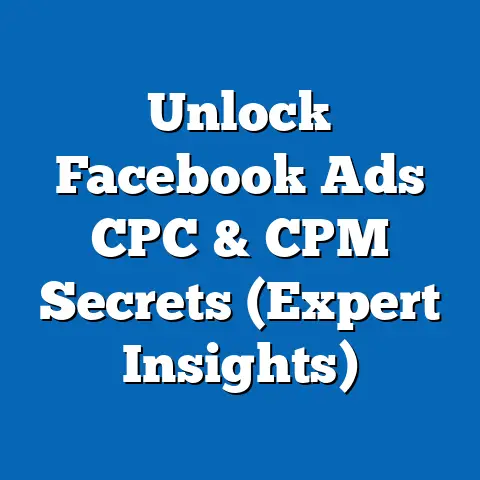Mastering Facebook Campaigns (Unlocking Key Strategies)
The internet is drowning in ads. If my grandma had a Facebook account (and knew what a pixel was), she’d probably be running ads for her prize-winning zucchini bread. But fear not, fellow marketers! Navigating the Facebook advertising landscape doesn’t have to feel like wandering through a digital jungle. In this guide, I’m going to share some key strategies to not only survive but thrive in the world of Facebook campaigns. I’ll sprinkle in a bit of humor along the way because, let’s face it, sometimes you just have to laugh to keep from crying when your ad budget disappears faster than free pizza at an office party.
The Importance of Facebook Ads in Today’s Marketing Landscape
Let’s start with the cold, hard facts. Facebook isn’t just a place to share cat videos and political rants; it’s a marketing powerhouse. As of [insert current year], Facebook boasts billions of monthly active users, a significant portion of whom are potential customers waiting to be reached. According to [insert relevant statistic source], a huge percentage of businesses are already leveraging Facebook ads to boost their brand awareness, generate leads, and drive sales.
Think about it: without Facebook ads, marketing today is like fishing without bait. Sure, you might get lucky, but the odds are stacked against you. The platform offers unparalleled targeting capabilities, allowing you to pinpoint your ideal customer based on demographics, interests, behaviors, and even life events. Plus, the diverse ad formats – from image and video ads to carousel and collection ads – give you the flexibility to create engaging experiences that resonate with your audience. And, surprisingly, for many businesses, it remains a cost-effective way to reach a massive and targeted audience.
Key Takeaway: Facebook ads are no longer optional; they’re essential for businesses seeking to thrive in today’s competitive marketing environment.
Understanding Your Target Audience
Imagine trying to sell snow shovels in Miami. Sounds ridiculous, right? That’s what happens when you don’t understand your target audience. Defining your audience is the cornerstone of any successful Facebook campaign. You can’t just throw money at the platform and hope for the best. You need to know who you’re talking to, what they want, and where they hang out online.
Facebook Insights is your secret weapon here. This powerful tool provides a wealth of data about your existing audience, including demographics, interests, purchase behavior, and even the pages they like. Use this information to create detailed audience personas – fictional representations of your ideal customer.
Audience segmentation is another crucial aspect. Don’t lump everyone into one giant bucket. Divide your audience into smaller, more specific segments based on shared characteristics. For example, you might segment your audience by age, gender, location, or interests. This allows you to tailor your ad messaging and creative to each segment, increasing the likelihood of engagement and conversion.
Knowing your audience is as crucial as knowing the difference between a cat meme and a dog meme in the digital space. You don’t want to show a dog meme to a die-hard cat lover, just like you don’t want to advertise luxury cars to people who are primarily interested in budget-friendly options.
Key Takeaway: Invest time in understanding your target audience. Use Facebook Insights and audience segmentation to create detailed personas and tailor your ad messaging accordingly.
This is where compelling ad copy comes in. Your ad copy is your chance to speak directly to your audience, to address their needs and desires, and to convince them to take action.Effective ad copy consists of several key elements:
Headline: This is the first thing people see, so it needs to be attention-grabbing and relevant. Keep it short, concise, and benefit-driven.
Description: This provides additional context and explains the value proposition of your product or service. Focus on the benefits, not just the features.
Call-to-Action (CTA): This tells people what you want them to do next, whether it’s “Learn More,” “Shop Now,” “Sign Up,” or something else. Make it clear and compelling.
Headline: This is the first thing people see, so it needs to be attention-grabbing and relevant. Keep it short, concise, and benefit-driven.
Description: This provides additional context and explains the value proposition of your product or service. Focus on the benefits, not just the features.
Call-to-Action (CTA): This tells people what you want them to do next, whether it’s “Learn More,” “Shop Now,” “Sign Up,” or something else. Make it clear and compelling.
Let’s look at an example of successful ad copy:
Headline: “Tired of Sleepless Nights?”
Description: “Discover the secret to a restful night’s sleep with our new weighted blanket. Experience deep, calming pressure that melts away stress and anxiety. Shop now and get 20% off your first order!”
CTA: “Shop Now”
Why does this work? It addresses a common pain point (sleepless nights), offers a solution (weighted blanket), highlights the benefits (stress relief, anxiety reduction), and provides a clear call to action (shop now).
Bad ad copy, on the other hand, is like an awkward first date – sometimes it’s just cringeworthy! Avoid vague language, irrelevant claims, and confusing CTAs. Remember, your ad copy should be clear, concise, and compelling.
Key Takeaway: Craft compelling ad copy that speaks directly to your target audience, addresses their needs, and provides a clear call to action.
Visuals Matter: Designing Eye-Catching Ads
In the world of Facebook advertising, visuals are king. People scroll through their feeds quickly, so you have mere seconds to capture their attention. High-quality visuals can make all the difference between an ad that gets ignored and one that drives engagement and conversions.
Here are some tips for designing eye-catching ads:
Use High-Resolution Images: Blurry, pixelated images are a big no-no. Use high-resolution images that are clear, crisp, and visually appealing.
Choose Relevant Images: Make sure your images are relevant to your product or service and to your target audience.
Use Video: Video is a highly engaging ad format that can capture attention and tell a story.
Keep it Simple: Avoid clutter and distractions. Focus on a single message and use clear, concise visuals.
Consider Your Brand: Make sure your visuals align with your brand identity. Use consistent colors, fonts, and imagery.
Use High-Resolution Images: Blurry, pixelated images are a big no-no. Use high-resolution images that are clear, crisp, and visually appealing.
Choose Relevant Images: Make sure your images are relevant to your product or service and to your target audience.
Use Video: Video is a highly engaging ad format that can capture attention and tell a story.
Keep it Simple: Avoid clutter and distractions. Focus on a single message and use clear, concise visuals.
Consider Your Brand: Make sure your visuals align with your brand identity. Use consistent colors, fonts, and imagery.
Think of it this way: a well-designed ad is like a gourmet meal, while a hastily thrown together one is like instant ramen. Both might fill you up, but only one leaves you feeling satisfied.
Key Takeaway: Invest in high-quality visuals that are relevant, engaging, and aligned with your brand identity.
Setting Up Your Campaign: Budgets and Bidding
Okay, you’ve got your target audience, your compelling ad copy, and your eye-catching visuals. Now it’s time to set up your campaign. One of the most important aspects of campaign setup is determining your budget and bidding strategy.
Facebook offers two main types of ad budgets:
Daily Budget: This is the average amount you’re willing to spend on your ad each day.
Lifetime Budget: This is the total amount you’re willing to spend on your ad over its entire lifespan.
Daily Budget: This is the average amount you’re willing to spend on your ad each day.
Lifetime Budget: This is the total amount you’re willing to spend on your ad over its entire lifespan.
Choosing the right budget depends on your goals and your campaign duration. If you’re running a short-term campaign, a lifetime budget might be the best option. If you’re running a longer-term campaign, a daily budget might be more suitable.
Facebook also offers several bidding strategies:
Lowest Cost: This strategy aims to get you the most results for your budget.
Cost Cap: This strategy allows you to set a maximum cost per result.
Target Cost: This strategy aims to get you results at a specific cost.
Value Optimization: This strategy aims to get you the highest value results for your budget.
Lowest Cost: This strategy aims to get you the most results for your budget.
Cost Cap: This strategy allows you to set a maximum cost per result.
Target Cost: This strategy aims to get you results at a specific cost.
Value Optimization: This strategy aims to get you the highest value results for your budget.
Choosing the right bidding strategy depends on your goals and your budget. If you’re focused on maximizing results, the lowest cost strategy might be the best option. If you’re focused on controlling your costs, the cost cap strategy might be more suitable.
Let’s be honest, the anxiety many feel about spending money on ads can be intense. It’s like budgeting for a weekend getaway that might just end up at a local diner. But with careful planning and strategic bidding, you can maximize your return on investment.
Key Takeaway: Choose the right budget and bidding strategy based on your goals and your budget. Experiment with different options to see what works best for you.
Optimizing Your Campaigns for Success
Setting up your campaign is just the first step. The real work begins with optimization. Facebook campaigns are not “set it and forget it.” You need to continuously monitor your performance, analyze your data, and adjust your strategies accordingly.
A/B testing is your best friend here. This involves creating multiple versions of your ad (different headlines, descriptions, visuals, or CTAs) and testing them against each other to see which performs best.
Here’s how to implement A/B testing in your Facebook campaigns:
- Identify a Variable: Choose one element of your ad to test (e.g., headline, image, CTA).
- Create Variations: Create two or more variations of your ad with different versions of the variable you’re testing.
- Run Your Ads: Run your ads and track the performance of each variation.
- Analyze the Results: Analyze the data to see which variation performed best.
- Implement the Winner: Implement the winning variation in your campaign.
In addition to A/B testing, you should also be analyzing your performance metrics regularly. Key metrics to track include:
- Reach: The number of people who saw your ad.
- Impressions: The number of times your ad was displayed.
- Click-Through Rate (CTR): The percentage of people who clicked on your ad.
- Conversion Rate: The percentage of people who took the desired action (e.g., made a purchase, signed up for a newsletter).
- Cost Per Result: The average cost of achieving your desired result.
By analyzing these metrics, you can identify areas for improvement and adjust your strategies accordingly.
The trial-and-error nature of optimization can sometimes feel like experimenting in the kitchen. You might end up with a culinary masterpiece, or you might end up with a burnt mess. But with persistence and data-driven insights, you can eventually find the perfect recipe for success.
Key Takeaway: Continuously monitor your performance, analyze your data, and adjust your strategies accordingly. Implement A/B testing to identify winning ad variations.
The Role of Retargeting in Facebook Advertising
Imagine someone visits your website, browses your products, but doesn’t make a purchase. They’re interested, but something’s holding them back. This is where retargeting comes in.
Retargeting allows you to show ads to people who have previously interacted with your website or your Facebook page. It’s like giving them a gentle nudge to remind them of what they’re missing.
Here are some tips for setting up successful retargeting campaigns:
Install the Facebook Pixel: This is a small piece of code that you place on your website to track visitor behavior.
Create Custom Audiences: Use the Facebook Pixel to create custom audiences of people who have visited specific pages on your website or taken specific actions.
Tailor Your Ads: Show ads that are relevant to the products or services that people have previously viewed.
Offer Incentives: Consider offering discounts or promotions to encourage people to make a purchase.
Install the Facebook Pixel: This is a small piece of code that you place on your website to track visitor behavior.
Create Custom Audiences: Use the Facebook Pixel to create custom audiences of people who have visited specific pages on your website or taken specific actions.
Tailor Your Ads: Show ads that are relevant to the products or services that people have previously viewed.
Offer Incentives: Consider offering discounts or promotions to encourage people to make a purchase.
Retargeting can sometimes feel like an ex following you around the internet – always there, but sometimes useful! But in the world of marketing, it can be a highly effective way to re-engage potential customers and drive conversions.
Key Takeaway: Implement retargeting campaigns to re-engage potential customers who have previously interacted with your website or your Facebook page.
Keeping Up with Facebook Changes and Trends
The world of Facebook advertising is constantly evolving. Facebook is always rolling out new features, updating its algorithm, and changing its advertising policies. To stay ahead of the curve, you need to stay updated on the latest news and trends.
Here are some resources where you can keep abreast of the latest news and trends in Facebook advertising:
- Facebook Business Help Center: This is the official source for information about Facebook advertising.
- Facebook Marketing Partners: These are third-party companies that provide tools and services to help businesses with their Facebook advertising.
- Industry Blogs and Newsletters: There are many blogs and newsletters that cover Facebook advertising news and trends.
The ever-evolving nature of Facebook can sometimes feel like the unpredictable twists in a soap opera. But by staying informed and adaptable, you can navigate the changes and continue to achieve success with your Facebook campaigns.
Key Takeaway: Stay updated on the latest news and trends in Facebook advertising by monitoring official sources, industry blogs, and newsletters.
To recap, here are the essential strategies we discussed:
- Understand Your Target Audience: Create detailed personas and segment your audience based on shared characteristics.
- Craft Compelling Ad Copy: Speak directly to your audience, address their needs, and provide a clear call to action.
- Design Eye-Catching Ads: Use high-quality visuals that are relevant, engaging, and aligned with your brand identity.
- Set Up Your Campaign Strategically: Choose the right budget and bidding strategy based on your goals.
- Optimize Continuously: Monitor your performance, analyze your data, and adjust your strategies accordingly.
- Implement Retargeting Campaigns: Re-engage potential customers who have previously interacted with your website or your Facebook page.
- Stay Updated on Facebook Changes and Trends: Monitor official sources, industry blogs, and newsletters.
Now it’s time to unleash your newfound knowledge. Go forth and conquer the Facebook advertising landscape! And if you happen to find the secret sauce to your grandma’s famous zucchini bread along the way, be sure to share it with the rest of us. Happy advertising!

